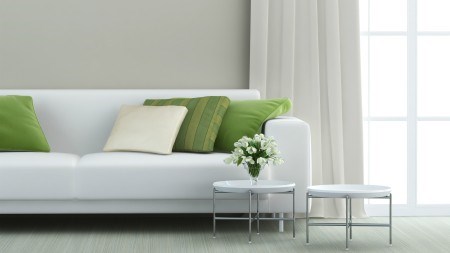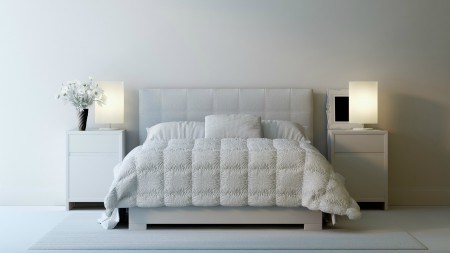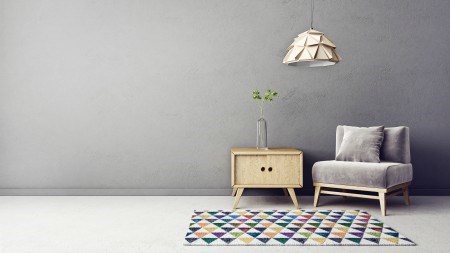Minimalism was first popularised in the 1950’s and 60’s and was often used to describe simplistic trends in music and later, design and architecture. Over time, the term has become synonymous with living intentionally and rejecting the mindless consumption of the world around us through appreciating the things you really need and getting rid of unnecessary clutter from your life. While this is often associated with a good spring clean or throwing out old junk, minimalism can become a much more powerful tool in the pursuit of true freedom – including freedom from the lure of worldly possessions and distractions. With this in mind, here are five key pointers on how to get started as well as how to incorporate minimalism into your way of life.
STEP 1: Change your mindset
The first step to embracing minimalism is the willingness to change how you view yourself, your possessions and the world around you. Because we more often than not associate our self-worth and identity with our possessions, we develop an unhealthy attachment to them and therefore battle to let go of things we don’t actually need while continuously striving to acquire more. By beginning to challenge your perceptions, you will be able to slowly start separating yourself from your possessions and realise that they aren’t responsible for your happiness or contentment. In fact, the beauty of minimalism is that it shifts your attention to the more important things in life – such as loved ones and experiences that enrich far more than possessions ever could.
See more: Quick and easy ways to declutter your home
STEP 2: Define minimalism for yourself and set personal goals
Once you have decided to open yourself up to a life of minimalism, it’s important to define what it means to you and why it appeals to you. Are you looking to spend less and save more? Are you just wanting to declutter? Or is it something deeper and more radical like giving up your 8 to 5 and travelling the world instead? Knowing that there is no right or wrong way to practice minimalism is key – it’s more about figuring out what works for you, so take the time to define it as well as how it will work best for you. A good place to start in this regard is to look at defining what you do want and are passionate about and then looking to get rid of or change the things that get in the way. It may be worthwhile setting clear goals for yourself as to how best to achieve this (along with realistic timeframes and action steps) as these will make the process less overwhelming and more manageable in the beginning.
STEP 3: Minimise the clutter
Now that you’ve defined minimalism for yourself, a great and practical place to start is getting rid of all your unnecessary possessions. Take the time to go through your home and evaluate each item in order to ascertain whether you should hang onto it or let it go, bearing in mind that a clearer space ultimately leads to a clearer mind according to minimalists. Also keep reminding yourself that by removing as much as you can, you are making it easier for yourself to live a more simplistic life and therefore allow for more freedom – for example, the space created from throwing out junk in the bottom drawer allows you to freely choose something more meaningful to take its place!
A good rule to make use of during this evaluation is the 90/90 rule i.e. ask yourself if you have used that item in the past 90 days as well as whether you intend to use it in the next 90 days. Also take the time to throw away old possessions, especially if you plan on purchasing or have purchased a replacement for it – no need to keep that old kettle if you’ve just bought a new one.
STEP 4: Be intentional
Another key component to minimalistic living is being intentional and considering the choices that you make on a daily basis (especially those linked to shopping). For example, when shopping for groceries, be aware of whether you’re automatically or intentionally placing things into your basket. Are they items you need or simply items that you think you want? Same applies when shopping for clothes or other items. Consistently asking yourself whether whatever you are purchasing is needed or just unconscious spending will definitely help you on your journey towards a more minimalist lifestyle. Another great way to practice being intentional is learning to become an avid re-user. For example, save packaging for reuse as storage containers for other items or learn to fix things rather than replacing them. Remember that minimalism is intentionally choosing to live with less and looking at ways to best achieve this.
STEP 5: Practice appreciation
Finally, remember to take the time to be grateful for all that you do have. Start by being grateful for the opportunity to even choose deciding to live with less. Appreciate and cherish all the possessions you do have and take the time to consider how they contribute towards you living a healthier, happier life. It does, however, go without saying that the greatest appreciation should be focused on the family and friends that surround you and the memories you are able to make with them. By practicing minimalism, you will have more time, and possibly money, to create even more memories than before, which is a gift in and of itself.
While the thought of minimalism might be appealing to you as a lifestyle choice, it is worthwhile to note that you may not be ready or able to take the plunge all in one go. Consider taking things day-by-day to start and making conscious and intentional choices as and when they present themselves. As time passes, you will find yourself making these choices less and less consciously and more out of habit, which is what makes something a lifestyle. At the end of the day, minimalism isn’t about all the stuff you do or don’t have. It’s about the way you think and choose to live... it’s as simple as that.





